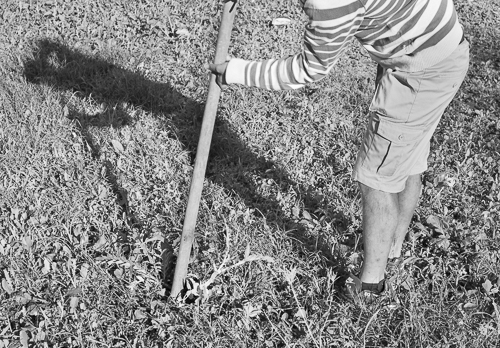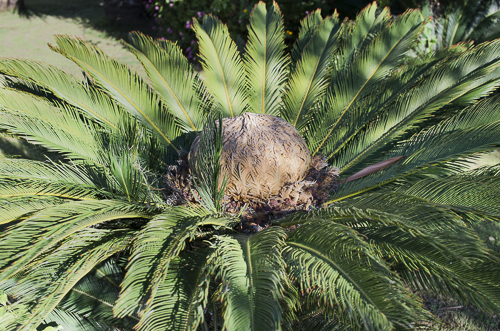The farm and guesthouse Bingia Bonaria is located on the lowlands just south of the town of Pula. There, a large traditional house is situated in a garden with palms and various Mediterranean plants, making an oasis-like area in a very dry environment. This green “island” is managed by Francesca e Ercole Loi together with their son Alberto.
In fact, the Church owned this area from the Middle ages onwards, while the Mercedari friars of the Church of Bonaria were cultivating vines here.
Ercole told us that some time in the 1950s, the statue of the Madonna of Bonaria was brought by pilgrims from Cagliari to a farmhouse opposite to the guest house of Bingia Bonaria, a distance of about 35 km. During the whole religious feast, the statue stayed put, while pilgrims arrived more or less continuously. The name Bingia is Sardinian for vine, while the second name is taken from the statue of the Madonna of Bonaria.
External stairs and walkways lead to rooms on the first floor of the guesthouse where guests can enjoy the view of the lovely garden from above, while below there is an ample terrace where they can stay outside in the pleasant atmosphere.
The sympathetic Loi family really tries to satisfy the needs of their guests within reasonable limits. Being forthcoming and available, the formal distance between owners and guests is absent. The dining room is next to the kitchen where all meals are prepared by the Loi family. However, time permitting, they also eat in the same room and at the same time as their guests. The ingredients for their meals come from the nearby sea and land. A large part of the vegetables and fruits being served comes from the garden of Ercole and Alberto, who in spite of very little rain, salty air due to a short distance to the sea and high temperatures, are able to cultivate a large variety of fruits and vegetables.
The following fruits are grown: strawberries, figs, prunes, apples, pears, apricots, peaches, pomegranates, grapes, watermelons and melons.
They are also cultivating tomatoes, peppers, zucchinis/courgettes, eggplants/aubergines, basil, onions, artichokes, beans, parsley and lettuce.
Various wild, but edible plants like arugula/rocket, chicory, chard, fennel and mint also grow on their property.
All of these products are used in the kitchen for preparing dishes like salads and jams.
Alberto kindly showed us how to make a cleft graft using a shoot of apricot, which needs to be made more resistant against diseases, and a robust plum tree. Since he’s only making grafts in spring, he opened a graft which had failed where a branch of the plum tree had been sawn off and a cut had been made. He inserted the shoot in the cut and told us that he would have embedded both the branch and the shoot in a piece of clay in order to protect both against bad weather and keeping the graft humid. Finally, he would have attached the graft tightly by means of a band of raffia fibers.
Having stayed several days at this lovely place and met so much hospitality, we said goodbye to Francesca and Ercole. Alberto, who had showed us the way to the Vargiu goat farm and even given us a ride back to Bingia Bonaria, went before us, leading us to the Vargiu farm as well.
We just have to say a heartfelt thank you to all members of the Loi family.


